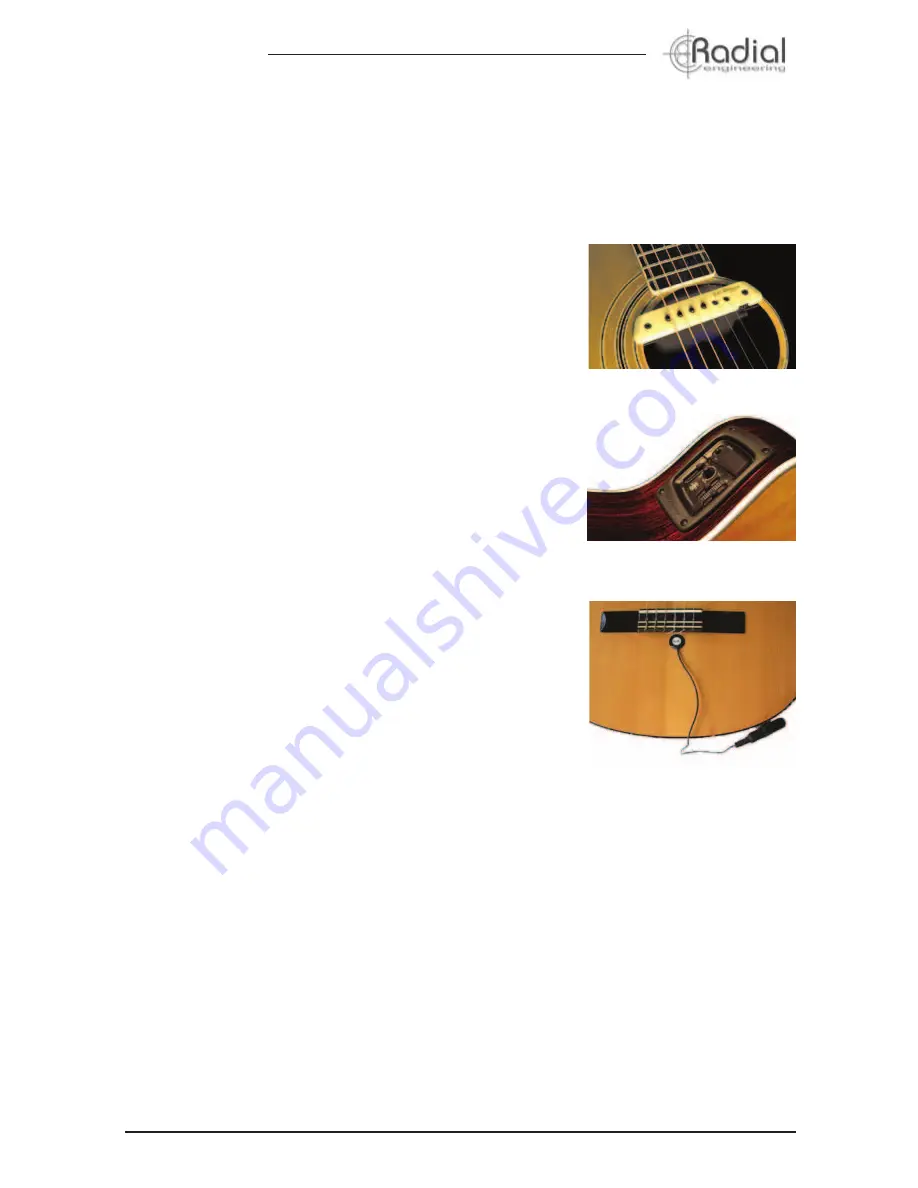
JDV™ Mk5 Active Direct Box
True to the Music
®
Radial Engineering Ltd.
4
PiCkuP oR insTRuMenT souRCe oPTions
If you review all of the various instrument pickups or music sources that are in use today,
one can actually break them down to five major categories. The JDV is designed to accom-
modate all of them.
Magnetic pickup
This is the most common type of pickup found on a Gibson®
Les Paul electric guitar or Fender® Jazz bass. To accommo-
date them, the JDV is equipped with Drag™ control load cor-
rection. This lets you adjust the load from 1M
Ω
down to 10k
Ω
to set the tone as if connected directly to a tube amplifier. Set
the Drag control to 12 o’clock and then adjust to suit.
Buffered instrument
A buffer is basically a unity gain amplifier. An active bass or
acoustic guitar with built in electronics can be grouped into
a category called a buffered source. These – usually battery
operated devices – produce a louder signal than a passive
magnetic pickup. Since they are already amplified, chang-
ing the load using the Drag control will have very little effect.
However, you can reduce the suceptibility by lowering the input
impedance by rotating the Drag control fully counter-clockwise.
Piezo transducer
For years artists and engineers have complained that piezo
pickups tend to sound harsh and peaky. During the develop-
ment of the Radial Tonebone PZ-Pre™, we discovered that
by elevating the impedance, you can dramatically widen the
frequency response and smooth out the tone. Like the PZ-Pre,
the JDV sports a 10M
Ω
option for piezos that extends the re-
sponse so well we actually had to incorporate high-pass filters
to control the excessive bottom end! The filter is particularly
effective at ‘sizing’ the instrument so that when you connect an
acoustic guitar or a mandolin, you can set the filter so that it coincides with the instrument in use.
Line level instrument
Although connecting a high output keyboard or drum machine to the JDV is somewhat over
the top, it will occasionally occur. This is where the internal rail voltage will come in handy.
Unlike most direct boxes that have a rail voltage of about 3 to 5 volts, the JDV is able to handle
signal levels in excess of 16 volts!
Microphone
Many acoustic musicians use a clip-on microphone to capture nuances that may be lost when
using a magnetic pickup. The JDV is equipped with a balanced input that may be used with a
dynamic or a condensor mic by activating the 48V phantom power. As a safety measure, the
48V phantom power must be turned on each time the JDV is being used.
As you gain familiarity with the JDV, you will discover that the channel-A feature set is slightly
different than channel-B so you can use any of the above, in whatever combination works
best for you.















